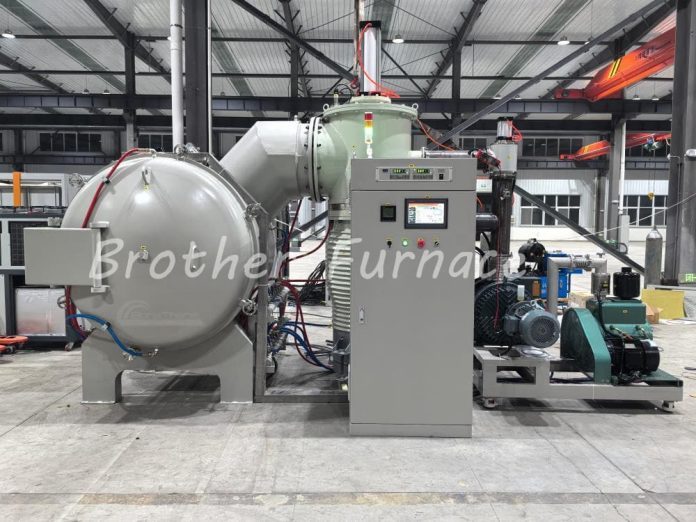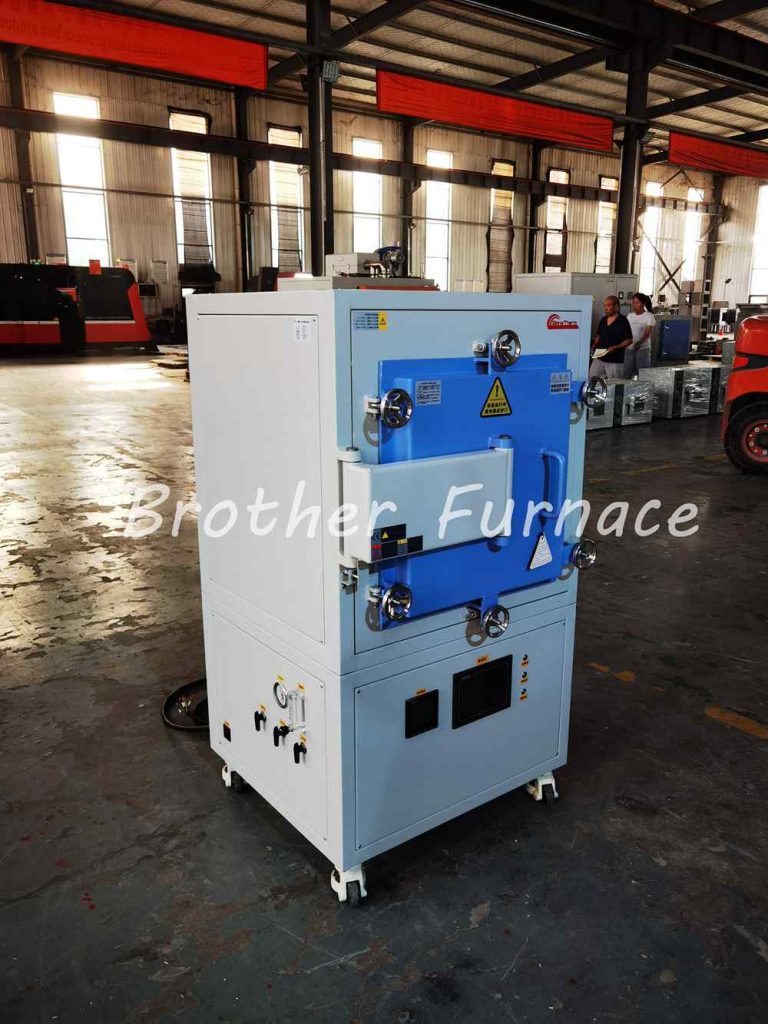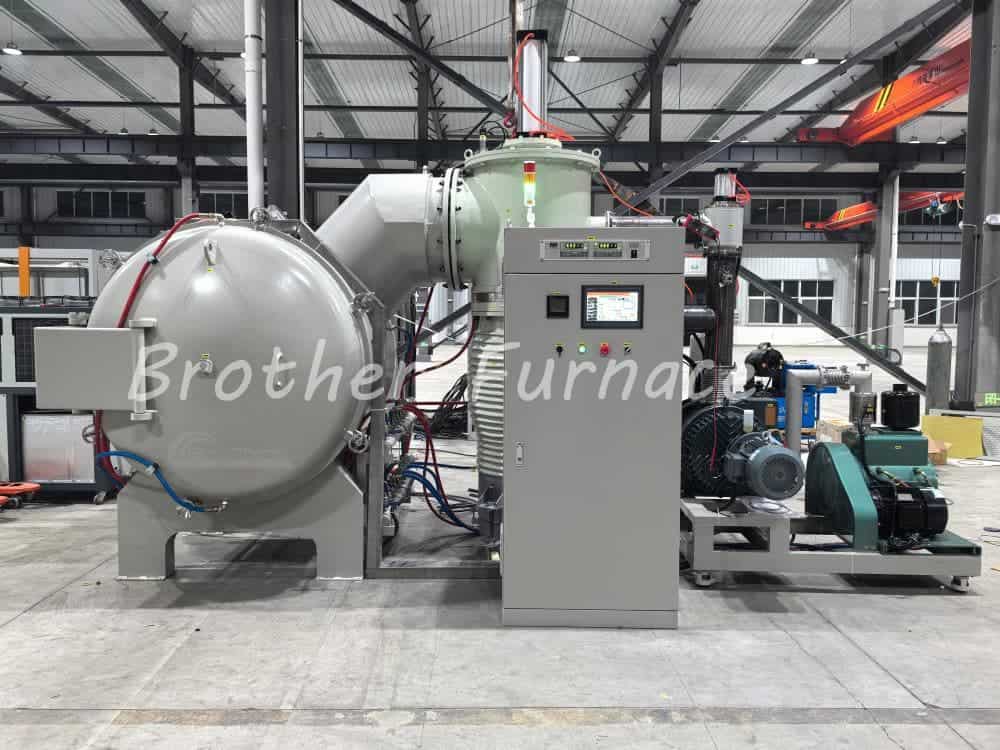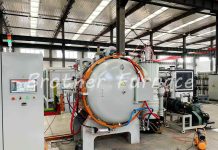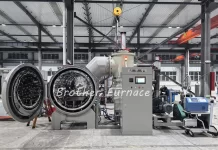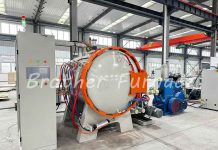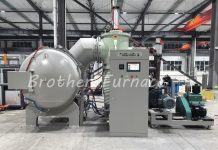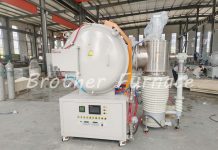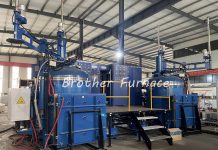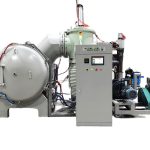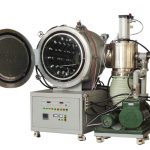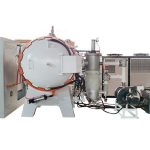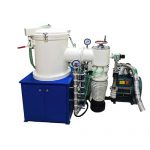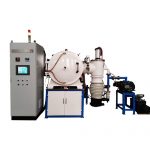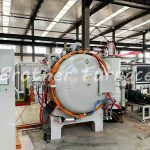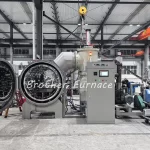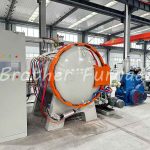Vacuum furnaces are critical in industrial and laboratory settings for processes requiring precise environmental control. Among them, two distinct types are commonly used: Low vacuum atmosphere furnaces and high vacuum furnaces. While both operate under reduced pressure, they differ significantly in vacuum levels, applications, and operational requirements. Below is a detailed comparison of these two systems.
1. Low Vacuum Atmosphere Furnace
An atmosphere furnace operates at Max. vacuum levels typically at -0.1Mpa. This range is achieved using mechanical vacuum pumps, such as rotary vane pumps. It’s primarily designed for operation within an inert atmosphere, such as nitrogen or argon.
Key Characteristics:
- Environment: While termed “vacuum,” residual gases (e.g., nitrogen, argon) may remain or be intentionally introduced to create a controlled atmosphere. This is useful for processes requiring minimal oxidation but not absolute gas elimination.
- Applications: Ideal for materials less sensitive to oxidation, such as certain metals (e.g., stainless steel) or ceramics. Common uses include annealing, brazing, and sintering of components where moderate purity suffices.
- Advantages: Lower operational costs, faster pump-down times, and simpler maintenance due to less stringent vacuum requirements.
- Limitations: The Max. Temperature is 1700°C. Higher risk of contamination compared to high vacuum systems, limiting suitability for high-purity applications.
See the details of Atmosphere Furnace with Low Vacuum
2. High Vacuum Furnace
A high vacuum furnace operates at Max. vacuum levels typically at 7×10-4 Pa. Achieving such levels requires advanced pumping systems, such as turbomolecular or diffusion pumps, often combined with mechanical pumps in multi-stage setups. It also can work under inert gases.
Key Characteristics:
- Environment: Near-complete elimination of atmospheric gases, creating an inert, ultra-clean environment. This prevents oxidation, decarburization, and contamination.
- Applications: Critical for high-precision industries like aerospace (titanium alloys), medical implants (biocompatible materials), and electronics (semiconductors). Processes include sintering, degassing, and thin-film deposition.
- Advantages: Max. Temperature is 2200°C. Superior material properties (e.g., density, strength), enhanced surface finish, and compatibility with reactive metals (e.g., tungsten, molybdenum).
- Limitations: Higher equipment costs, longer pump-down times, and complex maintenance due to stringent vacuum requirements.
Key Differences Between Atmosphere Furnaces and High Vacuum Furnaces
| Parameter | Low vacuum Atmosphere Furnace | High Vacuum Furnace |
| Max. Temperature | 1700°C | 2200°C |
| Max. Vacuum | -0.1 Mpa | 7x 10-4 Pa |
| Pumping System | Mechanical pumps (rotary vane) | Multi-stage systems (turbomolecular/diffusion + mechanical pumps) |
| Process Speed | Faster pump-down and cycle times | Slower due to ultra-high vacuum requirements |
| Material Compatibility | Less sensitive materials (e.g., steel) | Reactive or high-purity materials (e.g., Ti, Mo) |
| Cost | Lower initial and operational costs | Higher costs for equipment and maintenance |
| Contamination Risk | Moderate | Extremely low |
See the details of High Vacuum Atmosphere Furnace
Applications in Industry
- Atmosphere Furnaces: Widely used in automotive (brazing of aluminum parts), tool manufacturing, and heat treatment of bulk materials.
- High Vacuum Furnaces: Essential for aerospace components (turbine blades), medical devices (surgical implants), and advanced electronics (semiconductor wafers).
Conclusion
The choice between a low vacuum atmosphere furnace and a high vacuum furnace depends on material requirements, process purity, and budget. Low vacuum systems offer cost-effective solutions for less demanding applications, while high vacuum furnaces deliver unmatched precision for critical, high-value manufacturing. Understanding these distinctions ensures optimal selection for achieving desired product quality and performance.
For more details on vacuum sintering furnace specifications or to request a quote, feel free to contact our technical team.
More Atmosphere Vacuum furnaces recommend :
- Vacuum Brazing Furnace
- Vacuum Furnace up to 1700℃
- Vacuum Induction Melting Furnace
- Graphite Vacuum Furnace up to 2200℃
- Vacuum Gas Quenching Furnace
- Vacuum Hot Press Furnace
Follow us on Facebook

